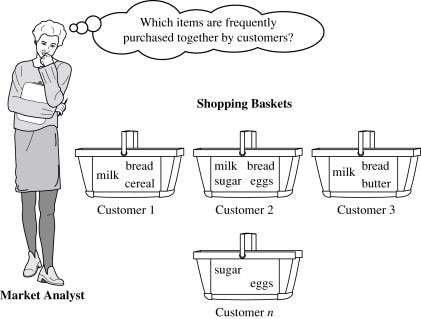Introduction
Data science has become a buzzword in recent years, but is it just another term for statistics or analysis? In this article, we will explore the differences between data science, statistics, and analysis, and delve into the various aspects of data science, including its methodologies and applications.
Data Science vs. Statistics and Analysis
While analyzing data has been a long-standing practice using statistics and related methods, data science goes beyond this. Data analysis typically involves extracting interesting patterns from individual data sets with well-formulated queries to explain a phenomenon. On the other hand, data science aims to discover and extract actionable knowledge from data, which can be used to make decisions and predictions, not just to explain what's happening. In this sense, both statistics and analysis are integral parts of data science.
Statistics is part of Data Science.
Analysis is part of Data Science.
Market Basket Analysis: A Practical Application
One example of data science in action is market basket analysis, which examines customer buying habits by finding associations and correlations between the different items that customers place in their shopping baskets.

Data Science: A Definition
Data science can be defined as the scientific exploration of data to extract meaning or insight, and the construction of software to utilize such insight in a business context. It is the discipline of drawing useful conclusions from data using computation.
Core Aspects of Effective Data Analysis
Effective data analysis can be categorized into six levels of difficulty:

Descriptive analysis: Describing a set of data and interpreting what you see.
Exploratory analysis: Discovering connections within the data.
Inferential analysis: Using data conclusions from a smaller population to make inferences about a broader group.
Predictive analysis: Using data on one object to predict values for another.
Causal analysis: Determining how changing one variable affects another, using randomized studies and strong assumptions.
Mechanistic analysis: Understanding the exact changes in variables, modelled by empirical equations.
Data Analysis by Data Type
Data analysis can be specialized based on the type of data being analyzed, such as:
Biostatistics for medical data
Data science for web analytics data
Machine learning for computer science data
Natural Language Processing for text data
Signal Processing for electrical signal data
Business Analytics for customer data
Econometrics for economic data

Data Science Methodology
The data science process typically involves the following steps:
Problem formulation
Data acquisition
Data analysis
Data product creation
Foundational Methodology for Data Science
A more detailed methodology for data science includes:
Business understanding
Analytic approach
Data requirements
Data collection
Data understanding
Data preparation
Modelling
Model evaluation
Model deployment
Feedback and refinement
Conclusion
In conclusion, data science is a multidisciplinary field that goes beyond traditional statistics and analysis. It encompasses various aspects of data analysis, with the ultimate goal of extracting actionable insights that can drive business value. By understanding the differences between data science, statistics, and analysis, we can better appreciate the unique contributions of data science to the modern world.
